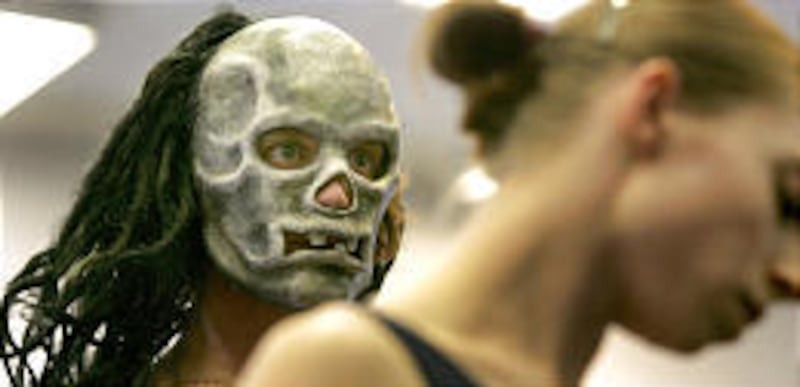Michele Braban said that when she teaches Christopher Bruce's "Ghost Dances" to dancers, she has to work slowly. She wants them to bring more of themselves and their own interpretations to the piece.
"You don't want to give them too much," Braban told the Deseret Morning News just before a rehearsal. "You give them a little bit to work with and to think about. Then you go back and give them a little more."
"Ghost Dances" will be part of the repertory for Ballet West's season finale, "Spring Sensation." Other works include two by George Balanchine, "Who Cares?" and "Concerto Barocco."
In 2002, Ballet West performed "Ghost Dances" for the first time and received audience and critical acclaim. "When the curtain opened, you could have heard a pin drop," said Jodie Fisher, Ballet West's public relations manager. "It was an amazing performance."
"Ghost Dances" was inspired during the anti-Salvador government coup in 1973 by Bruce's meeting with Joan Jara, widow of renowned Chilean musician and composer Victor Jara. "I wanted to do work that was about innocent people caught up in the violence of political unrest," Bruce said in a 2002 interview.
To do that, he worked around the idea of Indian tribal ceremonies and the haunting way that civil unrest affects human beings.
"To tell you the truth, the work can fit any situation of oppression," said Braban, who is Bruce's personal assistant and choreologist of London's Ballet Rambert, which is directed by Bruce. "From the smallest situations to all-out war, the work can fit whatever conflict people are going through."
That's why it is important not to overwhelm the dancers with information when setting the work, said Braban. "When we first start rehearsing, it's like I unwrap the basic structure of the work. I work with the movement of the bodies and get the dancers used to what is expected of them. They need to get a sense of how it flows. They need to know how to use the space on stage and their own bodies.
"From there, I build the work, much like creating a building. Once the foundation is laid, I add things. It's a slow process, but it needs to be worked carefully."
Braban is also under fellowship of the Benesh Institute in London. Formerly known as the Institute of Choreology, the Benesh Institute, founded by Rudolph Benesh, acts as a custodian for Benesh Movement Notation.
She began working as Bruce's assistant in 1999. She had met him and seen his works earlier, but it wasn't until she started working with him when she found herself having to pay attention to his choreography. "I've worked with him so much that I know what he expects from the dancers. I became familiar with his style, and I've sat with him in countless rehearsals taking notes that he wanted me to tell to the dancers."
One of the necessities is stamina, said Braban. "We work through sections of the dance over and over again, just to make sure the dancers understand what needs to be done. Once the choreography is set, then comes the costumes."
She added that working with masks is a major challenge for the dancers. "They know the choreography, but then the masks hinder their sightlines. They need to know the work well enough to feel where they are with the masks on."
Ballet West's performance will be unusual for Braban because she'll be able to see it opening night. "Usually I come in to a dance company, set the work and then leave before it's all done."
If you go
What: "Spring Sensation," Ballet West
Where: Capitol Theatre, 50 W. 200 South
When: Friday through April 16, 7:30 p.m.;
Saturday matinees, 2 p.m.
How much: $10-$65
Phone: 355-2787 or 888-451-2787
Web: www.arttix.org
E-mail: scott@desnews.com

